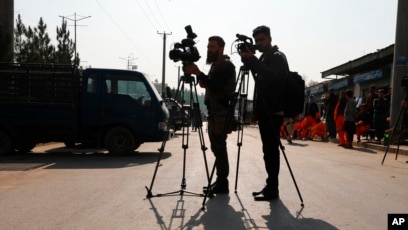
Taliban Imposes Ban on Depictions of Living Beings in Certain Afghan Media Outlets

—
### The Taliban’s Image Ban: A Dire Threat to Afghanistan’s Press Freedom and Creativity
The Taliban regime’s recent move to ban media outlets in several Afghan provinces from showing images of living beings — including humans and animals — is raising serious concerns about the future of press freedom, artistic expression, and individual rights in Afghanistan. The Ministry for the Propagation of Virtue and the Prevention of Vice (PVPV) has issued directives targeting the provinces of Takhar, Maidan Wardak, and Kandahar. These rules are grounded in the regime’s interpretation of Sharia law, which deems visual depictions of subjects “with a soul” as forbidden.
According to Saiful Islam Khyber, the spokesperson for the ministry, the law is already being implemented gradually across these provinces and is expected to eventually roll out nationwide. This ban follows a troubling set of regulations imposed in recent years that have severely restricted many aspects of life in Afghanistan, from the curtailment of women’s rights to increased control over media and artistic expression.
### Escalating Suppression Since 2021
Since the Taliban seized control of Afghanistan’s government in 2021, there has been a pronounced erosion of personal freedoms. Human rights organizations have long been vocal about the rise in authoritarianism under the regime, especially its acute effects on women, religious minorities, and political dissenters.
The media has been a particular target of Taliban repression. Afghanistan’s ranks in press freedom have plummeted in global indexes, with the country now being placed 178th out of 180 nations in the **2024 World Press Freedom Index** published by Reporters Without Borders (RSF). Afghan journalists are increasingly facing censorship, with many forced to operate in exile to avoid persecution or imprisonment.
The recent ban on images further compounds the challenges already encountered by Afghan media outlets, many of which have been struggling to survive in an environment of oppression. In a country where literacy rates are still far from universal, visual media plays a crucial role in dissemination of news and public information. The new rule effectively stifles one of the most credible tools for communication and education, leaving a void in public discourse and knowledge.
### A Crushing Blow to Artists and Cultural Expression
Omaid Sharifi, co-founder of the Afghan street art collective ArtLords, described this measure as another devastating blow to Afghanistan’s artistic community. Sharifi, who fled Afghanistan shortly after the Taliban’s rise to power, underscored the oppressive conditions under which artists have been operating since 2021. He believes the image ban is yet another mechanism to “erase identities and impede the public’s access to critical information.”
“By banning images of living beings, the Taliban is effectively silencing voices,” Sharifi said, describing the practice as a tactic to police not only the media but also creative expression. Street art, photography, graphic design, theater, and many other artistic mediums will undoubtedly suffer under these new constraints.
The abolition of visual storytelling restricts avenues of self-expression and cultural documentation. Historically, Afghanistan’s visual arts have been integral to preserving its diverse heritage, with much of its contemporary street art, for example, being used to advocate for peace and women’s rights. The Taliban’s ban excludes such cultural dialogue from public life, paving the way for a monocultural, ideologically narrow perspective to dominate Afghan society.
### A Broader Push for Ideological Control
The Taliban’s efforts to control media and ban images of living beings ties into its broader agenda to shape Afghanistan’s social norms more rigidly under their interpretation of Islamic teachings. In August, the country saw the introduction of laws that not only inhibit women from publicly speaking and showing their faces but also regulate personal behavior—such as prohibiting music, shaving, and gender-integrated public transportation.
This comprehensive ideological control aligns with the Taliban’s past governance approach. The earlier Taliban regime (1996–2001) similarly included draconian rules on cultural content, banning television and the internet, and preventing almost all forms of artistic expression, including music, painting, and photography. These measures have historically been tools used to prevent dissent and maintain order under authoritarian rule.
### The Road Ahead: Dimming Hope for Freedom
While Afghanistan struggles under this deluge of restrictions, voices in exile, including artists like Sharifi, continue to speak out. Sharifi maintains that the cultural and artistic space in Afghanistan is increasingly shrinking under the relentless hammer of the Taliban’s revisions. “It sends a clear message that any form of self-expression that does not align with their ideology will not be tolerated,” Sharifi said.
Formerly vibrant spaces of discourse built around art and journalism are now silenced, which doesn’t only impact creators but more broadly damages Afghan society. The repression of diverse viewpoints and creative voices diminishes freedom of thought, limits public engagement, and cuts off access to alternative narratives that challenge authoritarian control.
The international community, human rights organizations, and advocates for artistic freedom have recognized this assault on Afghan civil liberties